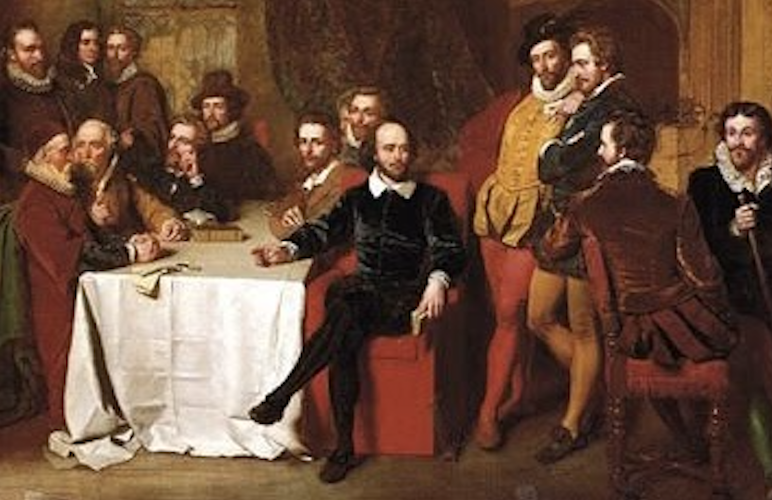If Doctor Who offered you a trip in his Tardis to a lost London tavern of your choice, it would be easy to draw up a shortlist of two but difficult to choose between them. Would it be the Mitre in Fleet Street or the Mermaid in Bread Street, off Cheapside? Both are saturated with literary associations, but the critical question is: in which one would you be more likely to meet William Shakespeare in full throttle?
The Mitre will forever be associated with another literary giant, Dr Johnson who, after superstitiously touching every street post on his way there from his nearby Fleet Street lodgings, would hold forth to everyone at the Mitre with his faithful biographer James Boswell, occasionally downing a whole bottle of port wine. It was there that they planned their Tour to the Hebrides. The Mitre was at 39 Fleet Street on part of the site now occupied by the banking house of Hoare, where there is a plaque.
The earliest recorded mention of the Mitre is in the register of St Dunstan’s Church in 1613, though the tavern existed before that. Shakespeare died in 1616, and although he spent much of his last years at Stratford-upon-Avon he could have visited the Mitre. Of course, the words “could have” are used often about Shakespeare, who left tantalisingly few clues to his whereabouts. A book of poems by Richard Jackson published in the late 1620s contains one entitled “Shakespeare’s Rime which he made at ye Myter’ in Flete strete,” though without any authentication it is not taken seriously by scholars.
But who needs authentication about the Mermaid when we can dream that there really was a club set up by Sir Walter Raleigh at which Shakespeare, Francis Beaumont, Ben Jonson, John Donne and others pitted their wits against each other in what has been described as a combination of “more talent and genius than ever met together before or since”. As Beaumont put it to Jonson:
“With the best gamesters. What things have we seen
Done at the ‘Mermaid?’ Heard words that have been
So nimble, and so full of subtle flame,
As if that every one from whence they came
Had meant to put his whole wit in a jest”.
Or John Keats much later:
“Souls of Poets dead and gone,
What Elysium have ye known,
Happy field or mossy cavern,
Choicer than the Mermaid Tavern?”
Sadly, there is no evidence that Raleigh was involved. Could Shakespeare have been there? There are no documented facts, but there is strong circumstantial evidence.
Not only was the creator of Falstaff a friend of the habitués of the Mermaid, he was also a close friend of William Johnson, the Mermaid’s landlord. Johnson was named as a trustee in the document recording Shakespeare’s purchase of the Gatehouse in Blackfriars, the only property in London he is known to have bought. This makes it difficult to believe that Shakespeare would not have visited this iconic inn. The rest can only be left to our imaginations.
All previous instalments of Vic Keegan’s Lost London can be found here and a book containing many of them can be bought here. Follow Vic on Twitter. Painting depicting Shakespeare at the Mermaid by John Faed, 1851.
On London is a small but influential website which strives to provide more of the kind of journalism the capital city needs. Become a supporter and receive an action-packed weekly newsletter and free entry to online events. Details here.


In the standfirst, should ‘pattern’ read ‘patron’?
Yes! Thank you Jonathan and apologises. Corrected now.